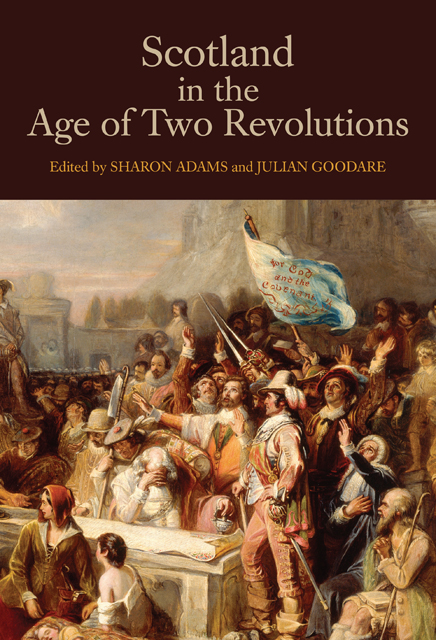Book contents
- Frontmatter
- Dedication
- Contents
- Figures and Tables
- List of Contributors
- Preface
- List of Abbreviations
- 1 Scotland and its Seventeenth-Century Revolutions
- 2 The Middle Shires Divided: Tensions at the Heart of Anglo-Scottish Union
- 3 The Western Highlands and Isles and Central Government, 1616–1645
- 4 The Scottish Bishops in Government, 1625–1638
- 5 The Scottish Revolution
- 6 In Search of the Scottish Republic
- 7 Highland Lawlessness and the Cromwellian Regime
- 8 The Worcester Veterans and the Restoration Regime in Scotland
- 9 The Political Thought of the Restoration Covenanters
- 10 Scottish State Oaths and the Revolution of 1688–1690
- 11 The Tribulations of Everyday Government in Williamite Scotland
- 12 The Company of Scotland and Scottish Politics, 1696–1701
- Chronology of Seventeenth-Century Scotland
- Further Reading
- Index
- Studies in Early Modern Cultural, Political and Social History
8 - The Worcester Veterans and the Restoration Regime in Scotland
Published online by Cambridge University Press: 28 February 2023
- Frontmatter
- Dedication
- Contents
- Figures and Tables
- List of Contributors
- Preface
- List of Abbreviations
- 1 Scotland and its Seventeenth-Century Revolutions
- 2 The Middle Shires Divided: Tensions at the Heart of Anglo-Scottish Union
- 3 The Western Highlands and Isles and Central Government, 1616–1645
- 4 The Scottish Bishops in Government, 1625–1638
- 5 The Scottish Revolution
- 6 In Search of the Scottish Republic
- 7 Highland Lawlessness and the Cromwellian Regime
- 8 The Worcester Veterans and the Restoration Regime in Scotland
- 9 The Political Thought of the Restoration Covenanters
- 10 Scottish State Oaths and the Revolution of 1688–1690
- 11 The Tribulations of Everyday Government in Williamite Scotland
- 12 The Company of Scotland and Scottish Politics, 1696–1701
- Chronology of Seventeenth-Century Scotland
- Further Reading
- Index
- Studies in Early Modern Cultural, Political and Social History
Summary
Charles II, famously, hated the year he spent in Scotland in 1650–51. It was a curious year: a young and untried king, subjected at first to all sorts of humiliation, whose authority and influence grew in direct proportion to the military disasters suffered by the forces of the party that had brought him back to Scotland. On 31 July 1651, with Cromwell’s forces in control of Fife and about to occupy Perth, Charles, his ramshackle army and some members of the committee of estates left Stirling on the only road open to them: the road south. Charles was at last free from all tutelage, but his army’s road led to Worcester and to Cromwell’s ‘crowning mercy’ there five weeks later – their defeat. It was a flight forward rather than an invasion. Their condition was ridiculous, wrote the duke of Hamilton. ‘We have one stout argument, despair; for we must now either stoutly fight it or die.’ The duke and many others fought stoutly on the day of Worcester, and like many others he died.
One man who fought stoutly and did not die, and, remarkably, escaped a relentless pursuit, was the king. For the rest of his life Charles felt enormous gratitude, not only to those brave souls who helped him to safety in the weeks after the battle, but also to those who had accompanied him south from Stirling on his desperate, but in some senses liberating, adventure. They were mostly Scots, but not all. There were Englishmen too, notably Charles’s boyhood friend George Villiers, duke of Buckingham. It is the Scots who are the focus of this chapter. A list of them, along with those who stayed behind to govern in Charles’s absence and raise an army for him, reads like a roll-call of the Scottish administration for the first two decades of the Restoration government. This is far from coincidence. These men, loyal enough to follow the king at this juncture, comprised most of those few Scots whom Charles trusted and liked. Whether they provided Scotland with the best possible government is an altogether different question.
I
Exhibit A must be John Maitland, earl, later duke, of Lauderdale. In 1651 he had known the king for three years, a veteran statesman at 35 who had bonded closely with his 21-year-old sovereign.
- Type
- Chapter
- Information
- Scotland in the Age of Two Revolutions , pp. 135 - 154Publisher: Boydell & BrewerPrint publication year: 2014

